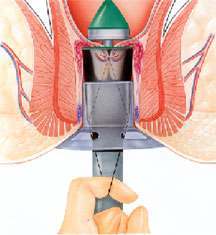Hemorrhoid Surgery
Types of Hemorrhoids Surgery
 Hemorrhoids Surgery
Hemorrhoids Surgery
Hemorrhoids (commonly known as piles or hemroids) are a result of excessive swelling of the Hemorrhoidal tissue and blood vessels of the anal canal and rectal region.
Did you know that there are degrees of severity that can help you assess your hemorrhoids and their intensity? Hemorrhoids have been put into four main categories that rank hemorrhoids from the least severe to the most severe.
Level 1
Hemorrhoids rated level 1 may bleed, but they do not become prolapsed.
Level 2
Hemorrhoids in level 2 have prolapsed, but they can be pushed back into the anal walls with or without any accompanied bleeding.
Level 3
Level 3 hemorrhoids cannot retract back into the anal cavity, and must be put back into their original positions manually using a medical procedure. Level 3 hemorrhoids will bleed.
Level 4
Hemorrhoids at Level 4 will have all other conditions present, but they also may have blood clots. This type of blood-clotted hemorrhoid is called a Thrombosed Hemorrhoid. These types of hemorrhoids may require surgery.
Types of Surgery
There are non-surgical Hemorrhoid Treatment options available for treating milder cases of hemorrhoids. Hemorrhoids surgery is an option for providing long-term relief from severe hemorrhoids, especially those that become prolapsed over time. A prolapsed hemorrhoid is where hemorrhoidal tissue exits the anal canal—not to be confused with external hemorrhoids.
If surgery is required for you, and if you have tried other Hemorrhoid Cures but still need surgery nonetheless, here are the available options.
Milligan-Morgan Hemorrhoid Surgery
Developed in the 1930s, this technique of hemorrhoids surgery was invented in Britain by Dr. Milligan and Dr. Morgan. Even today, it remains one of the most popular types of hemorrhoids surgery. The surgery consists of three main incisions in the Hemorrhoidal tissue. These incisions, which resemble a pear-shaped outline, are made within the tissue and then left open. Each incision is divided from one another by small gaps, which is comprised of anal skin and mucous membrane.
This procedure is quite effective at absolving hemorrhoids. This surgery is used for both external and internal hemorrhoids, and is considered the “gold standard” surgical procedure for completely absolving severe hemorrhoids.
Laser Hemorrhoids Surgery
Most recently, laser surgery for hemorrhoids has been a wonderful advancement in hemorrhoid surgery. This procedure is quick with minimal pain, and a fast healing time. A surgeon specializing in laser surgery vaporizes or simply removes the unwanted, diseased hemorrhoid tissue using a high-infrared laser. Hemorrhoid surgery using a laser has its advantages over other surgical treatments commonly used for hemorrhoids.
As mentioned, laser hemorrhoid surgery takes less time, is less discomforting, allows for quick healing and does not require a great deal of follow up care or medication. Laser surgery is generally used alone, but can be combined with other surgical procedures as well. You’ll want to plan well in advance for your laser surgery, even though it is less invasive. Also, it is of course necessary to take the proper steps to recover from hemorrhoids surgery after the procedure is complete.
Ferguson Surgical Method
This hemorrhoids surgery was discovered in 1952 by Dr. Ferguson, and remains a popular choice, since it’s quite similar to the Milligan-Morgan technique. The Ferguson surgical method is basically a modified version of the Milligan-Morgan hemorrhoids surgery. With the Ferguson methods, the main difference is the surgical incisions are closed (either partially or completely) by suturing, or via coagulation using a surgical device. A drawback for the Ferguson technique is the high rate of suture breakage. Unfortunately, this prolongs the time required for healing of the surgical wounds.
Procedure for Prolapse and Hemroids (PPH)
One of the most recent types of hemorrhoid surgery, used for all hemorrhoids including bleeding hemorrhoids, is called the Procedure for Prolapse and Hemroids, or PPH. This procedure is also known as a Stapled Hemorrhoidectomy.
How does PPH work? It reduces the overall the prolapse of Hemorrhoidal tissue. Plus, the remaining scar tissue helps strengthen the walls. Absolving prolapse is achieved by cutting through a band of prolapsed tissue, while the remaining tissue is stapled down.
The PPH procedure is a less painful hemorrhoids surgery than other procedures, and you can resume normal life activities quickly. However, the downside is that there is a risk of PPH damaging the rectal wall muscles. Unfortunately, PPH has also been associated with a higher prevalence of hemorrhoids recurrence than other types of hemorrhoids surgery.